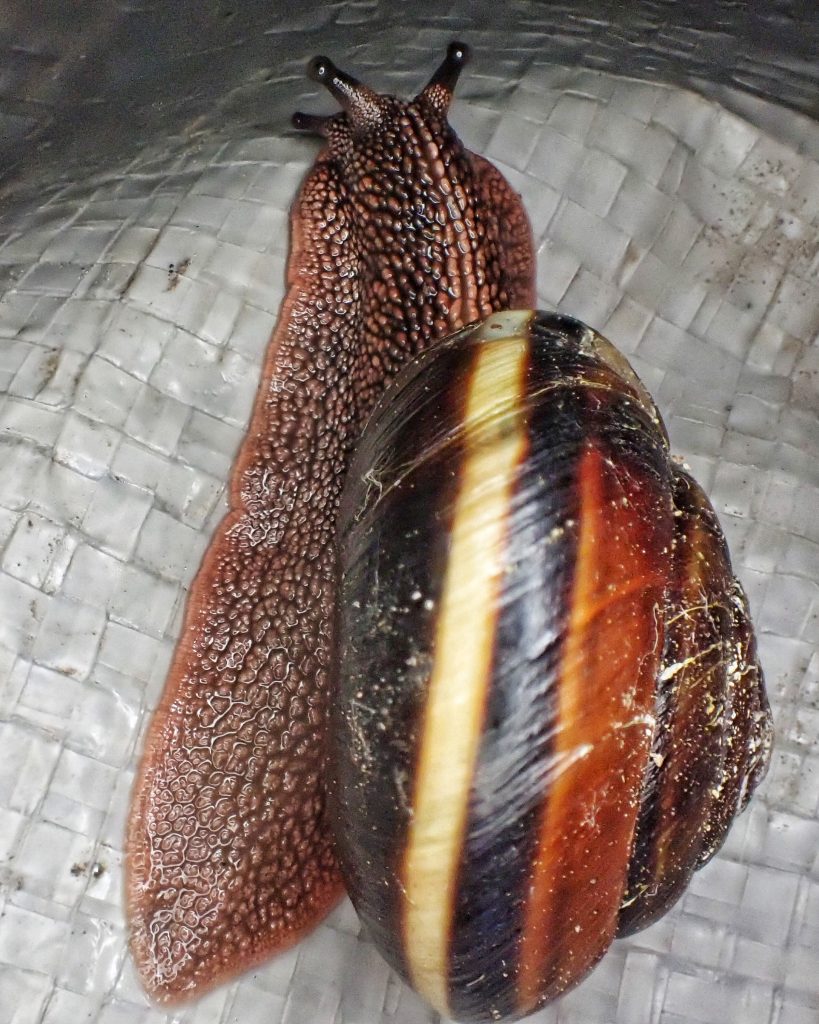
These are the snails I found under the ground cover of my set up during the excursion I talk about in ‘A Trip to the confluence of the NF Toutle and Green Rivers’. These beautiful snails are the largest native snails in the Pacific Northwest. And I’ve been wanting to profile them because not only are they large and striking, they are also often confused with Cepaea nemoralis (Grove Snail), a non-native snail considered by many to be a garden pest and therefore eliminated on sight (though they are not actually as problematic as they are thought to be), and so the harmless Pacific Sidebands are killed because of mistaken identity. I say they are harmless because they are primarily eaters of lichen and fungi, and when they do consume leaves they prefer them to be from the native plants they evolved with, rather than the introduced horticultural ones.
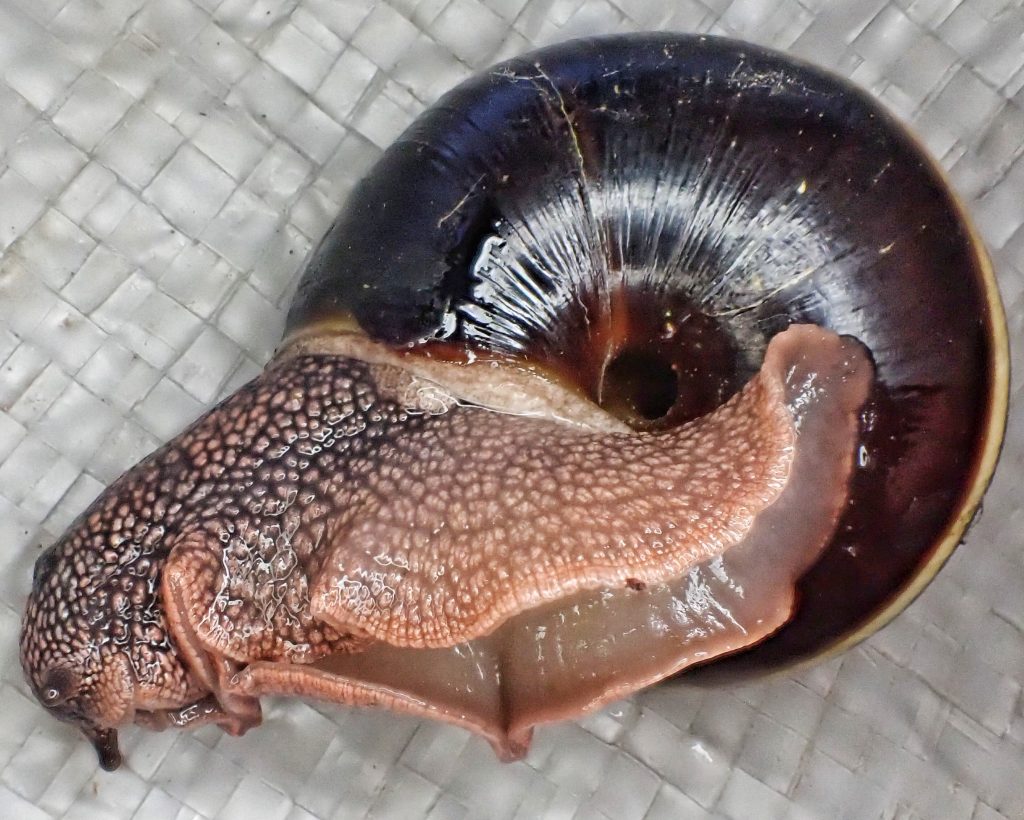
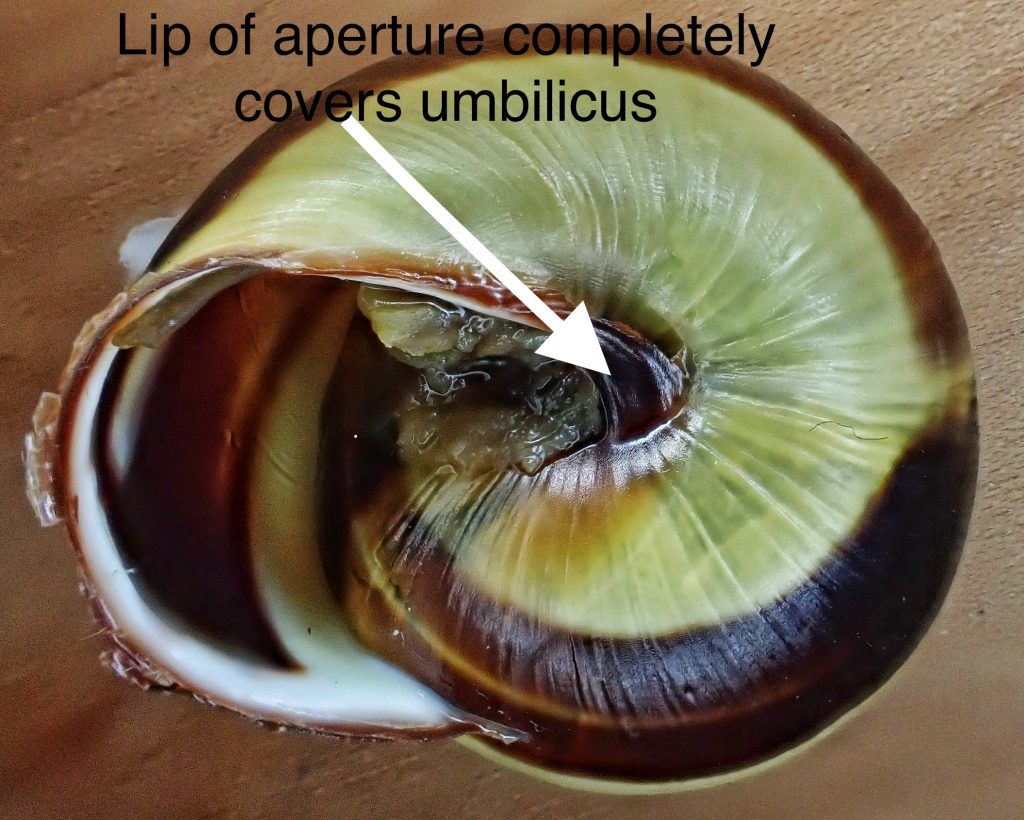
These snails are hermaphroditic (as are most terrestrial snails) and are one of the species that utilize ‘love darts’ during courtship. “The pear shaped dart sac is located laterally to the genital atrium and opens into its right side.The dart is a double-edged structure ranging from 2-6mm in length.” https://ir.library.oregonstate.edu/downloads/f7623h07c. To quote from my discussion of ‘love darts’ in an earlier snail profile- “This is a calcareous (in this species- other genera have love darts made of chitin or cartilage) shaft, with a species specific shape (see here for some of the wicked ones), that is coated with pheromone rich mucus designed to make the female organs of their hermaphroditic partner more receptive to the retention of their sperm, which is jabbed into the prospective mate, whilst said mate is spearing them with a lance of their own. Yikes!
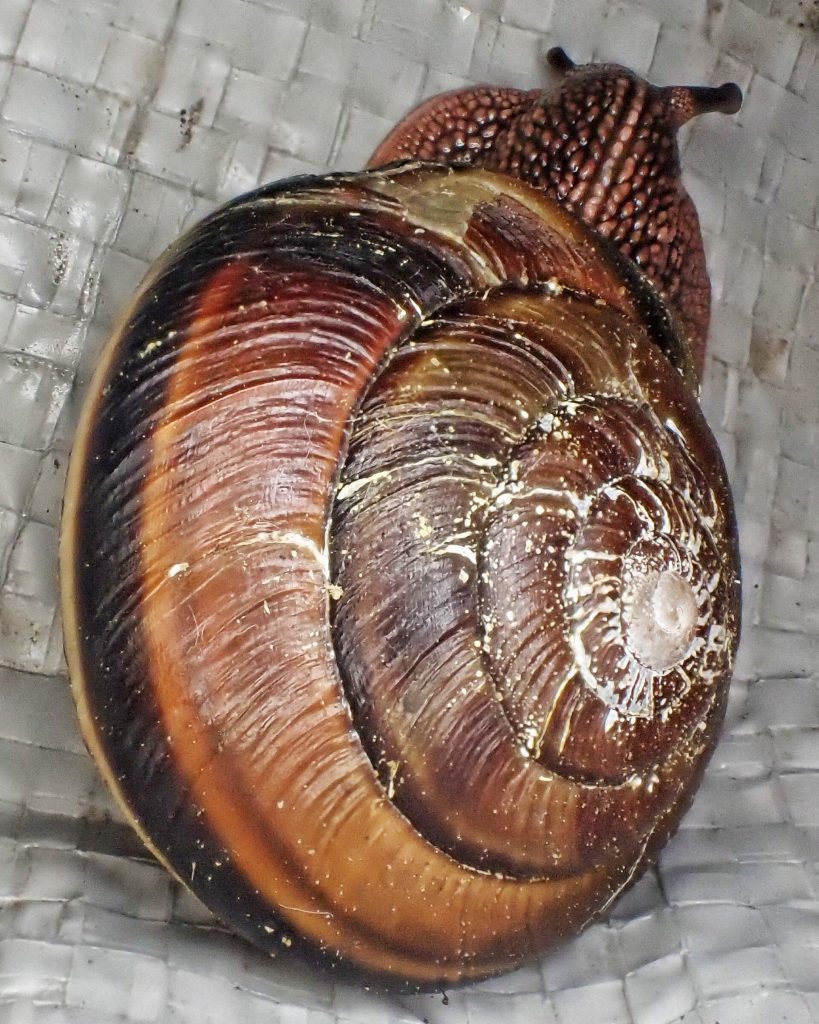
It had always been thought that these darts were harmless to their recipient, but a study a few years ago (Kimura/Chiba; 2015) found that stabbed snails lived only 3/4 as long on average as the unstabbed ones, and clutch size dropped roughly 10% after the initial darting, and almost 30% over their lifetime. More study needs to be done to understand exactly what other benefits darting conveys, but it seems clear as to why snails have evolved away from this ‘stab and be stabbed’ form of courtship.”
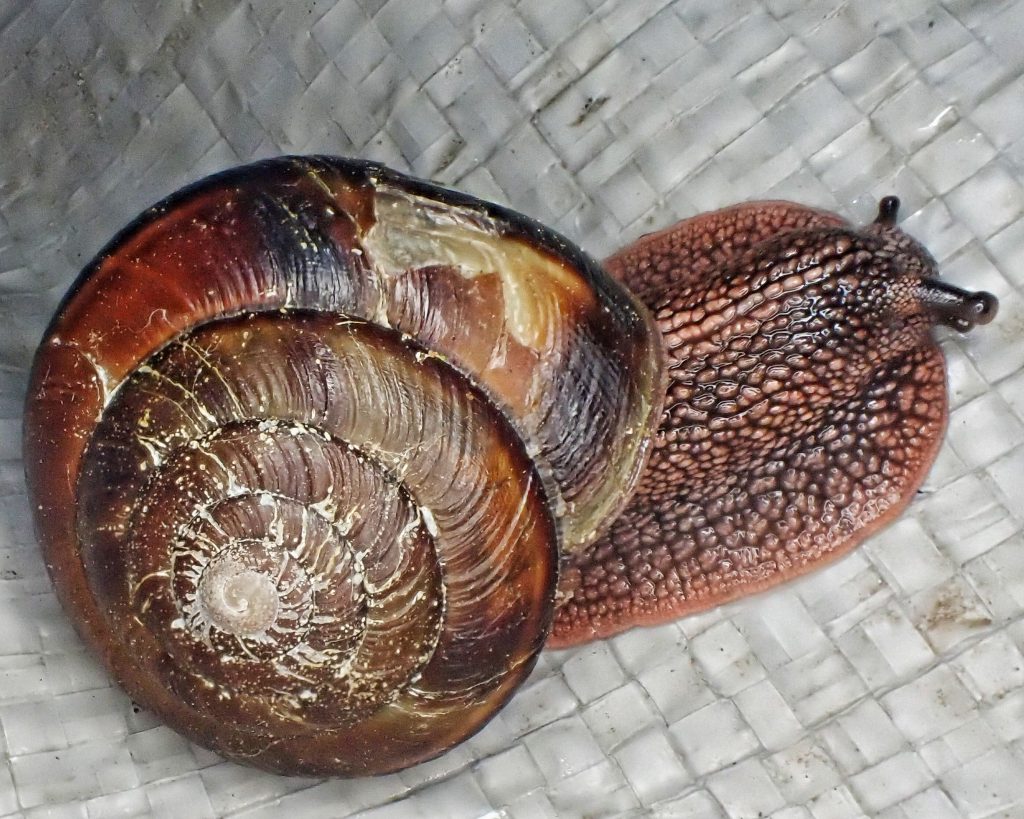
Description– Large (31-38mm wide by 20-27mm high) mostly yellowish brown to brown snail with a deep umbilicus that can be up to 1/2 covered by the lip of the aperture; color and pattern is highly variable but usually contains at least one band that contrasts with the ground color, and that follows the outer edge of the dorsal whorls; colors an also include cream, green, and black, or mottled; body is a rosy brownish grey.
Similar species– Cepaea nemoralis (Grove Snail) are more globose, and either lack an umbilicus or it is mostly covered; Monadenia chaceana has a more open (usually 1/2 to 2/3) umbilicus, is smaller, with a lower spire, and is only found from the Umpqua river watershed into northern California.
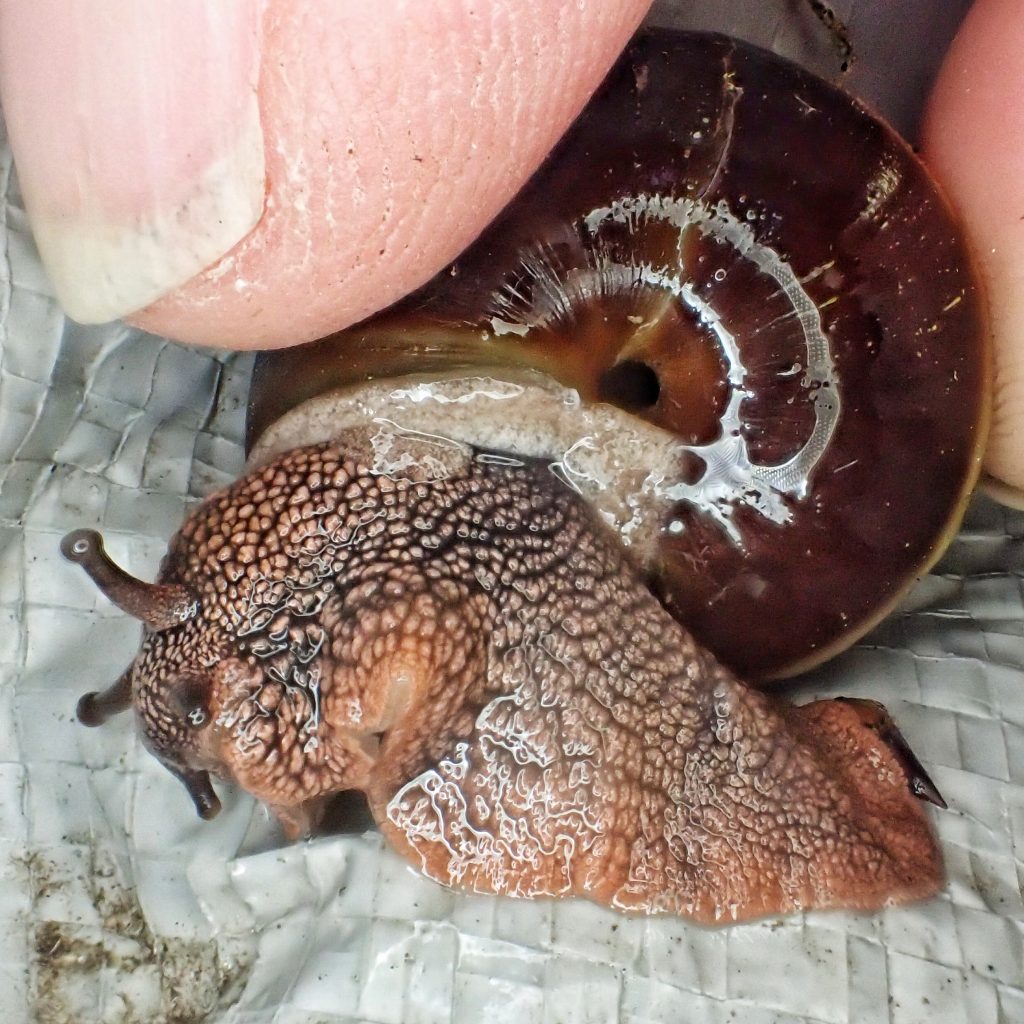
Habitat– “Deciduous, coniferous or mixed forests; also in open woods and grassy areas; have been observed in trees as high as 6.7 m (Forsyth 2004).” BC Conservation Data Centre Species Summary for Monadenia fidelis; often found in winter under moss, bark, and logs.
Range– “This species, and its several subspecies, occurs along the Pacific coast from southeastern Alaska to northern California, generally west of the crest of the Cascade Range (Roth and Sadeghian, 2003).” BC Conservation Data Centre Species Summary for Monadenia fidelis; also found in the western Siskiyous, Klamath Mountains, and along the coast in sw Oregon and nw California
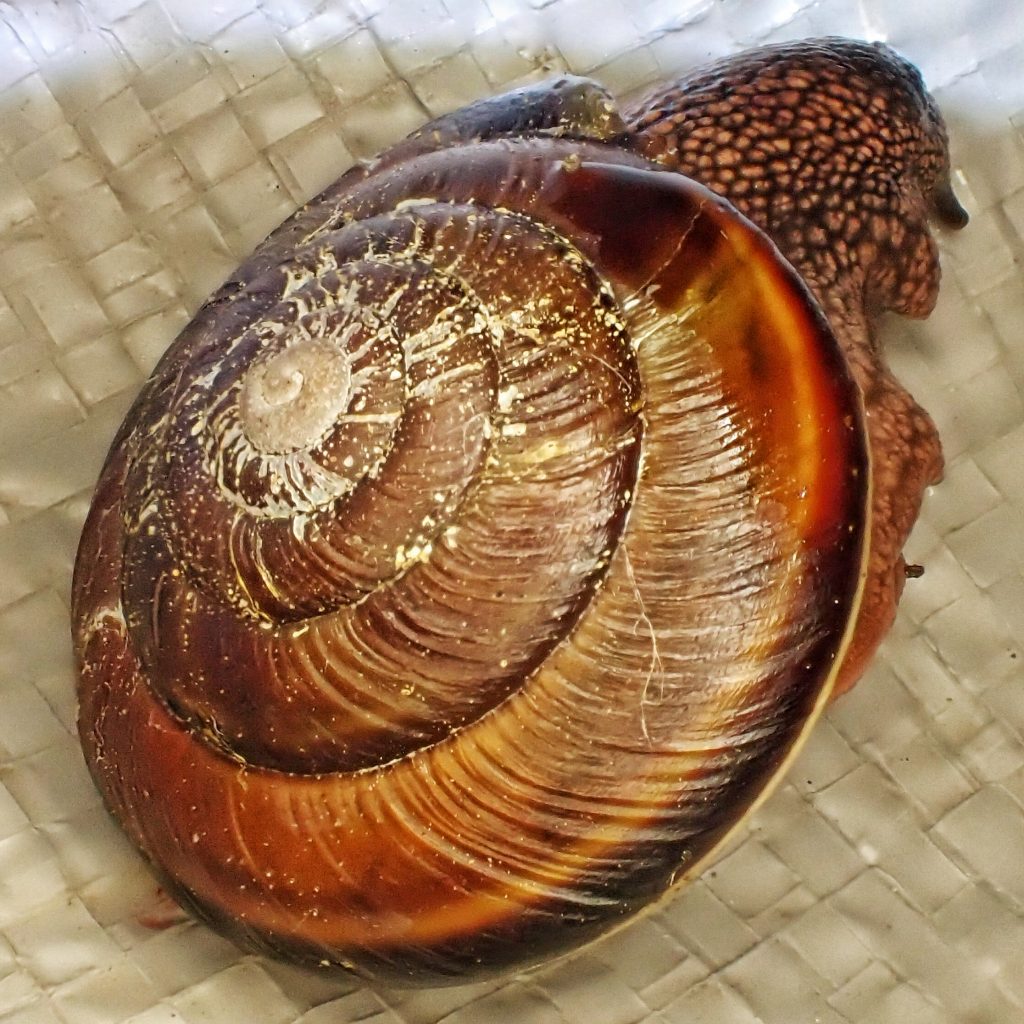
Eats– Lichens, fungi, and plant material; said by some sources to be fond of sword ferns.
Eaten by– Various birds, mostly corvids, as well as garter snakes, raccoons, shrews, mice, and other small carnivores, and invertebrates such as the beetles in Scaphinotus, Cychrus tuberculatus , Ocypus olens , and the carnivorous snail Haplotrema vancouverense (Robust Lancetooth Snail).
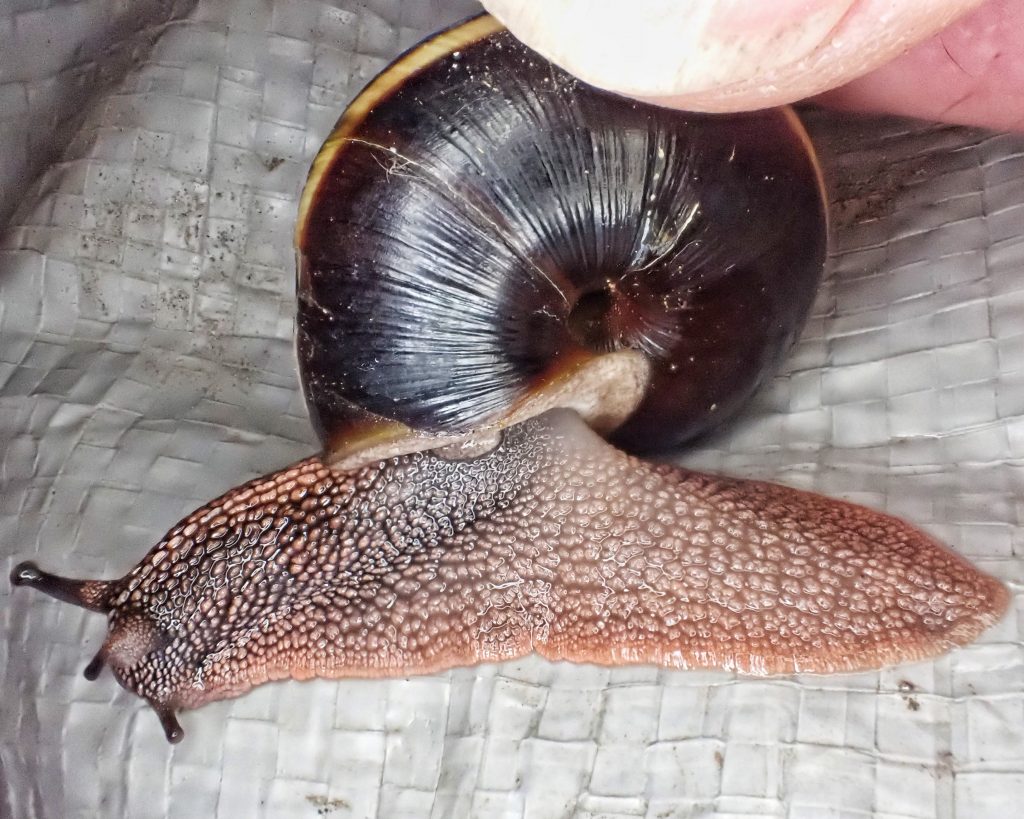
Adults active– Year around, though often more or less dormant during the hottest, driest, and coldest times.
Life cycle– I can find no information on the life history of this species.
Etymology of names– Monadenia is from the Greek words for ‘one gland’, and refers to members of this genus having only a single mucus gland. The specific epithet fidelis is from the Latin word for ‘faithful’, but JE Gray doesn’t enlighten us in his original description as to what he finds so faithful about this snail.
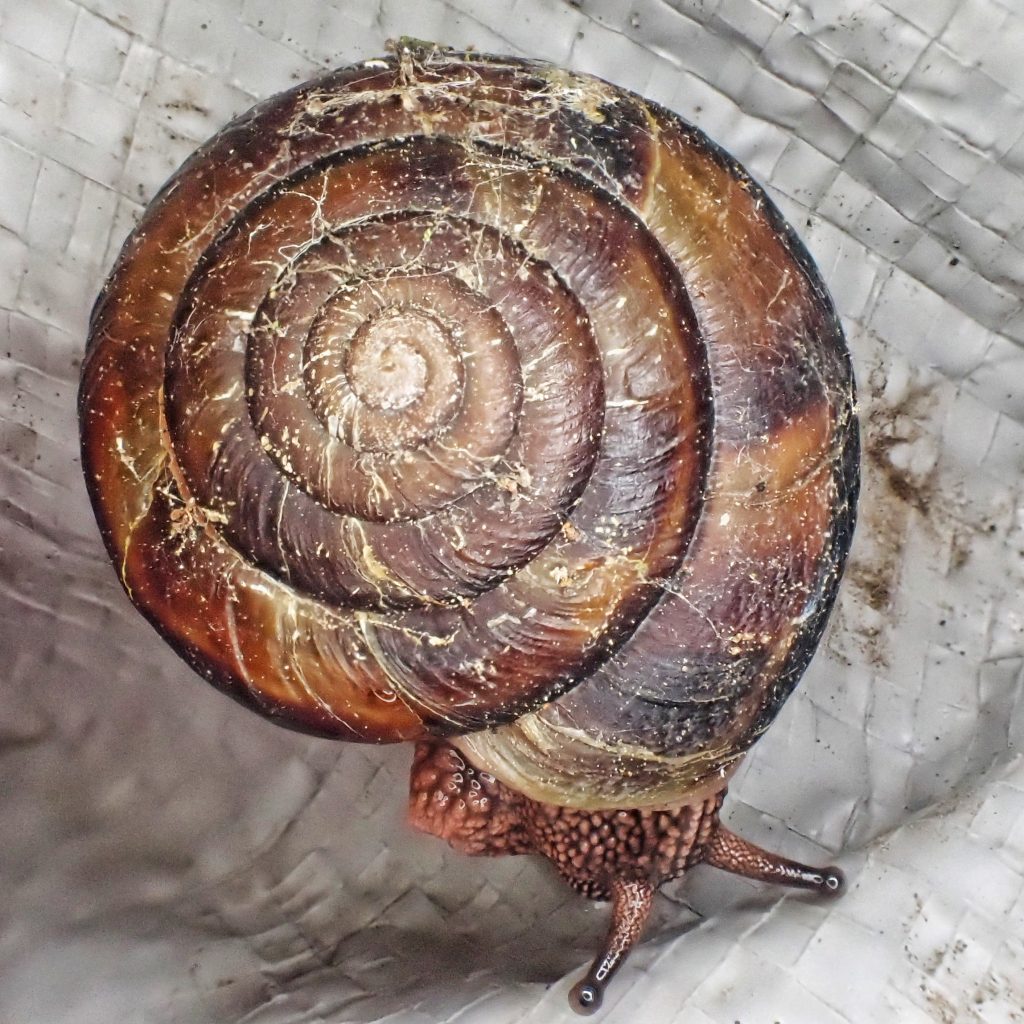
Nature’s Cupid: the Pacific Sideband Snail – Nisqually Land Trust
Molluscabase – Monadenia fidelis fidelis (J. E. Gray, 1834)
https://ir.library.oregonstate.edu/downloads/f7623h07c
https://en.wikipedia.org/wiki/Monadenia_fidelis
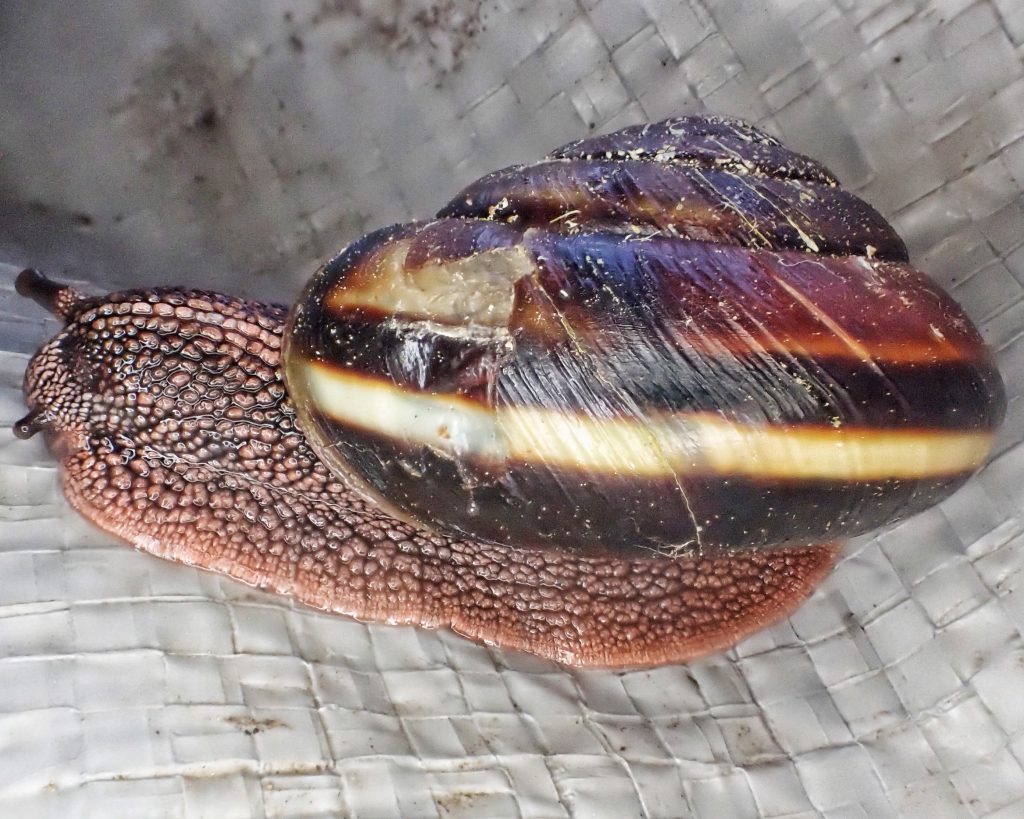
1 thought on “Monadenia fidelis (Pacific Sideband Snail)”